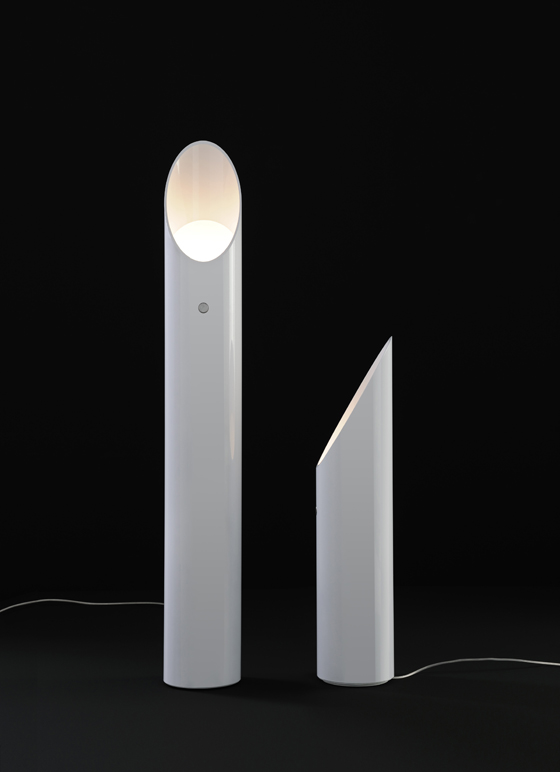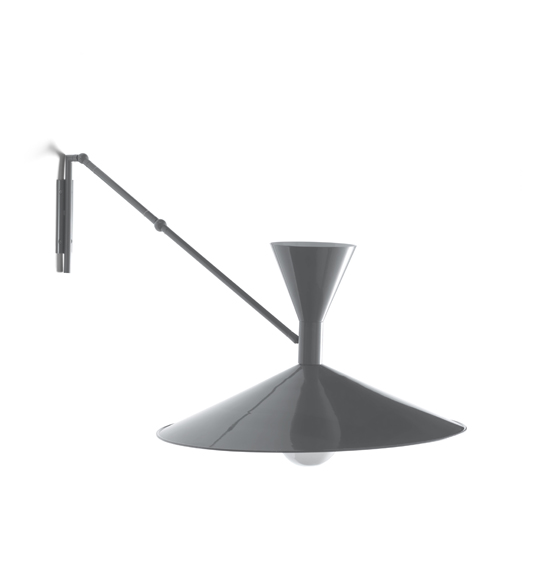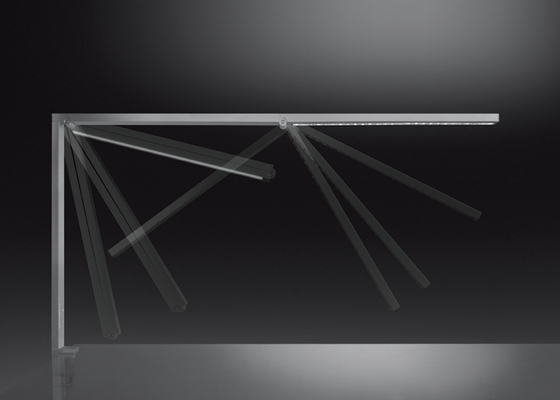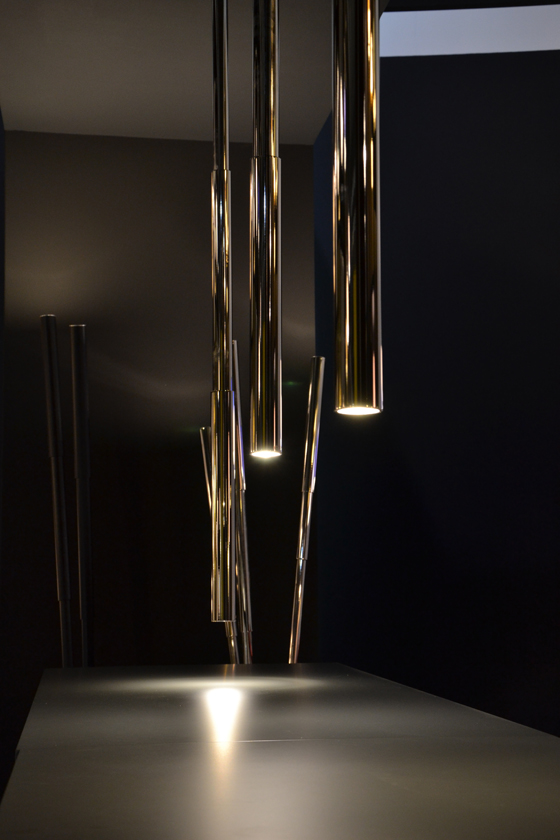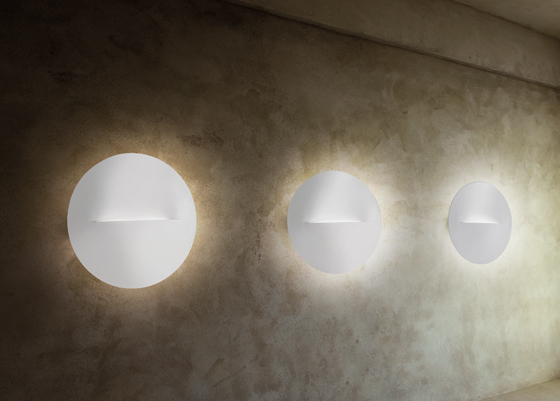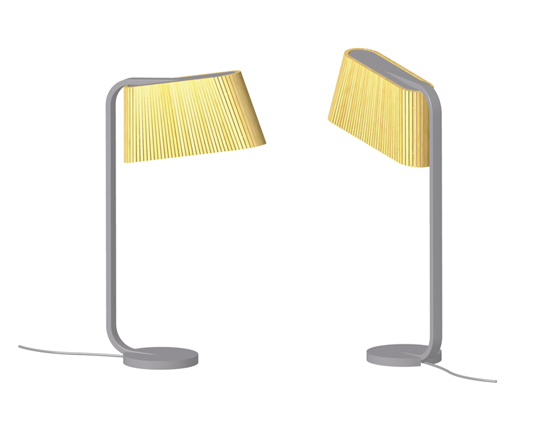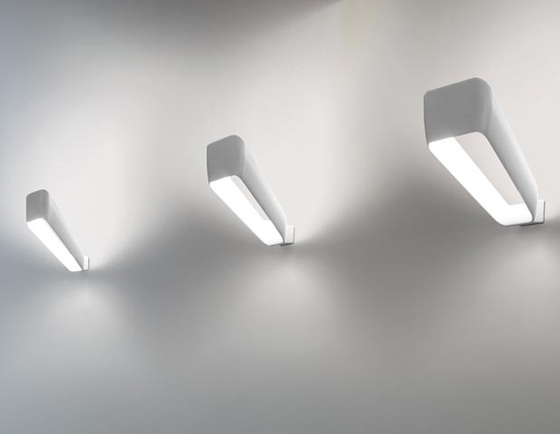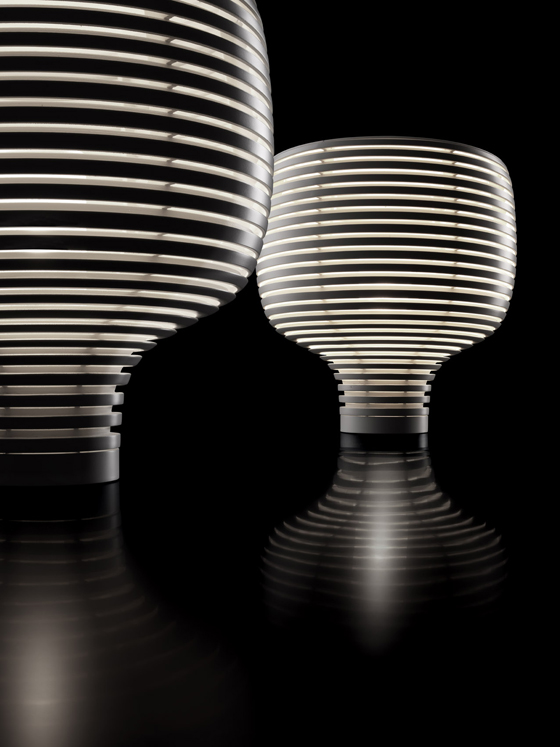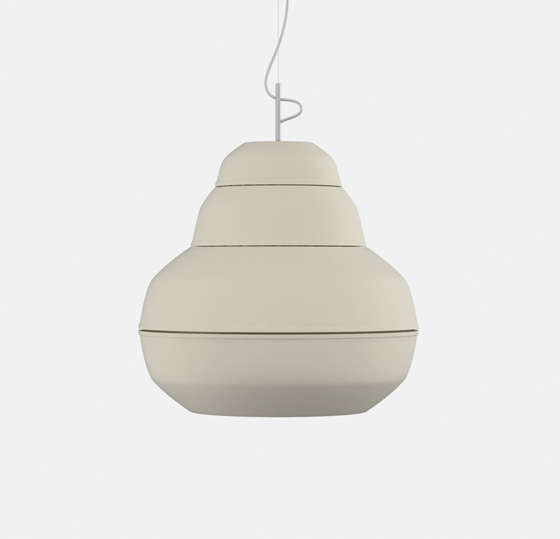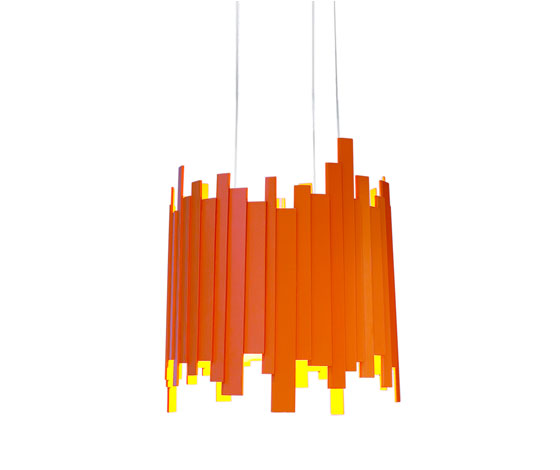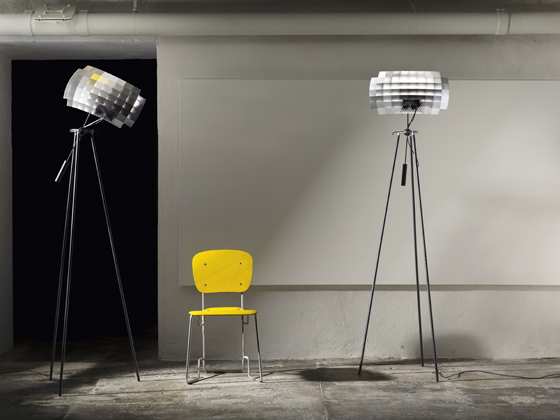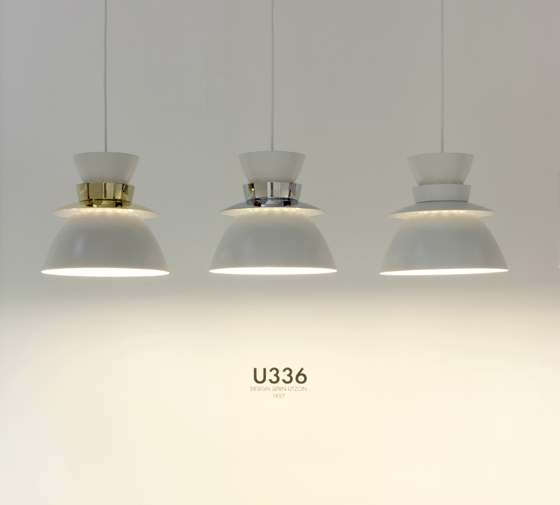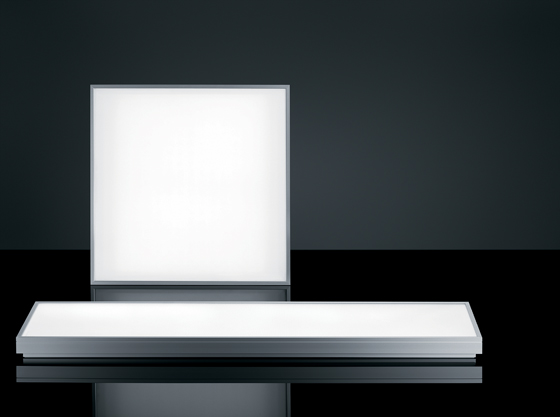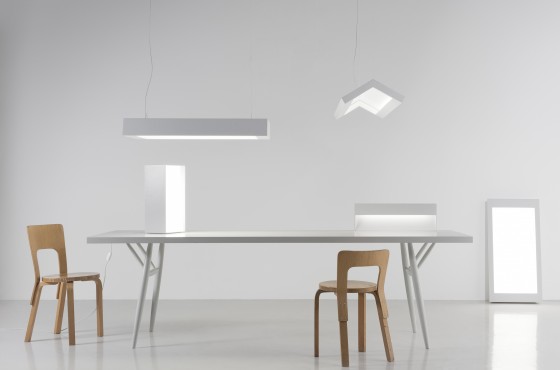Light Headed: Euroluce 2011
Text by Simon Keane-Cowell
Zürich, Switzerland
05.05.11
Excuse me. Have you got a light? No? Well, maybe you should have visited this year's edition of Euroluce, the international lighting fair that rides pillion with the Milan Salone Internazionale del Mobile. But not to worry. Architonic has made a selection of some of the show's luminaries for you, so sit back and light up.
Among the larger, louder objects currently on display at London's Design Museum is the rather modest overall winner of this year's Brit Insurance Design Awards: a light bulb. Leaving aside the institution's somewhat hyperbolic description of the plaudits as 'the Oscars of the design world' for a moment, young British designer Sam Wilkinson's formally intriguing, low-energy 'Plumen 001' bulb – which marries expressive aesthetics with a sound eco-awareness – serves, among other things, to demonstrate that our love affair with artificial light is still going strong.
'Beth' by Carlo Colombo for Italian manufacturer Oluce
After last year's Milan Salone del Mobile, that behemoth of a design fair, the New York Times' design critic Alice Rawsthorn asked 'Does the world need another chair?' Rawsthorn is not alone in believing that the answer is 'no', unless the chair in question, as she puts it, is 'gobstoppingly innovative, beautiful, sustainable, expressive, useful or whatever'. But the same surely goes for lighting, perhaps even more so given the fact that here are a collection of object types that rely on a continuous supply of energy to give them purpose – in terms of utilitarian function, at least.
Le Corbusier's 'Lampe de Marseille' from 1954, reissued by Nemo, Cassina's lighting brand
A tour of the recent Euroluce lighting biennale, which rides pillion with the Salone, will undoubtedly have left many a visitor agreeing with Rawsthorn's take on design excess. Over 40,000 square metres of Milanese exhibition hall were the setting for an exhaustive display of lighting products by a raft of international manufacturers, each attempting, naturally, to present their work as somehow different. The fact of the matter, sadly, is that such product proliferation brings with it a degree of uninspired and unnecessary reiteration. A greater emphasis, in general, on a more considered use of energy – aided to a large extent by developments in LED technology – hasn't necessarily been attended by innovation in formal or material terms, it would seem.
That said, there was a good deal on show that did switch us on. Below are just some of the exhibition's luminaries.
For a complete photo tour of Euroluce 2011 on Architonic's Facebook page, follow the links at the end of this article.
'Fold' by Ernesto Gismondi for Italian brand Artemide
…..
Architectural
Among respected Italian manufacturer Artemide's new products on show at this year's Euroluce was their 'Fold' task light, designed by Ernesto Gismondi, which, with its ultra-rational form and emphatically architectural relation to space, was particularly striking. No prizes for guessing, given its name, that the lamp's key feature is its adaptability: three hinged arms, fabricated from extruded aluminium, the last of which houses a row of LEDs, allow the piece to be fully extended, shortened for more compact work environments, or folded away entirely.
Architect Jean Nouvel's 'Micro Telescopic' lights at the Pallucco stand
Grand master of architecture Jean Nouvel left his mark on this year's Euroluce, not least in terms of the entrance (with retinue) he made at the Pallucco stand when meeting the press. (See the link at the end of this article for Architonic's interview with the celebrated French architect.) Nouvel's new, decidedly sculptural 'Micro Telescopic' lights for the Italian brand certainly created a strong impression, demonstrating how the creative still thinks like an architect when designing objects. The design of these LED-powered floor and pendant lamps invites the user to create a dialogue with the space in which they are placed by determining their length. 'I like elementarity,' Nouvel tells Architonic. 'The lamp is just one line where you can't see the light source itself.'
Ramón Esteve's 'Link' modular lighting system for Spanish label Vibia
In contrast to such concerted rationalism, Ramón Esteve's 'Link' lighting system for Spanish label Vibia takes a more maximalist approach. It applies the recent trend for non-uniform modularity in furniture to ceiling-mounted lighting, allowing the creation of a range of dramatic, architecturally inspired geometric schemes, which play with volume, depth and contrast. Reminiscent of a urban skyline, only inverted, the system, when installed, requires only one electrical connection, and the light can be dimmed according to the user's wish.
Graphic
A number of lighting designs shown at this year's edition of Euroluce had a strong graphic presence, displaying an emphasis either on line or a certain flatness. Among them was Milan-based designer Valerio Cometti's 'Rise' wall light for Italian brand ITRE, whose flat, circular form at once conceals the light source that lies behind it, while revealing in a highly controlled manner an auratic glow around it. A slit in the middle of the piece heightens the sense of considered restraint, as it permits a small degree of illumination through it. Ambience guaranteed.
Meanwhile, Luxit have produced a family of lamps by Alberto Basaglia and Natalia Rota Nodati that unite strong, super-thin lines often associated with task lighting with a bold, primary-colour-based decorative palette. Both the table and floor versions can be repositioned easily (just two fingers are all you need, claims the manufacturer), allowing its powerful LEDs to get to work. The dimmable floor lamp also houses a speaker that serves its integrated, remote-controlled radio and comes with Bluetooth connectivity.
Alberto Basaglia and Natalia Rota Nodati's 'Top Four Table' lights for Italian label Luxit
Celebrated, Milan-trained designer Carlo Colombo has created a pared-down, strongly silhouetted lamp called 'Beth' for Oluce, producer of such classics as Vico Magistretti's 'Atollo' table lamp and Joe Colombo's '281' acrylic light, which features in MoMA's permanent collection. Carlo's design, which sits somewhere between floor and table lamp in terms of size, formally references 1970s lighting design, yet, technically speaking, it's right up to date. A special satined, anti-glare lens sits within a glossy aluminium housing, creating an indirect, diffused lighting effect.
'Ovalo' table lamp by architect Seppo Koho for Finnish label Secto Design
More organic in terms of its use of material, but just as graphically oriented, are Finnish label Secto Design's wooden lamps, which combine the warmth of natural or lacquered birch (what else?) with the creation of volume through the repetition of line. Designed by architect Seppo Koho, these simple yet compelling forms are hand-made in Finland, and the collection, which was launched in 1999 with the 'Secto 4200' pendant light, is augmented this year by a trio of new designs: the 'Ovalo' floor, table and wall lamps.
Expressive/Sculptural
Eschewing the graphic for the expressive and/or the sculptural, a certain number of new lighting designs were attracting second looks in Milan. Young British designer Benjamin Hubert's die-cast-aluminium 'Frame' wall light for Italian manufacturer Kundalini was one of these. (For Architonic's pre-Milan interview with Hubert, follow the link at the end of this article.) Hubert has created a design that speaks at once of presence and absence. The expressive, solid form fascinates precisely because of the lack of material at its centre. But this isn't just a case of a hole for hole's sake. The void allows light to reflect around its inner surface, while framing the illuminated wall itself.
'Frame' by Benjamin Hubert for Italian manufacturer Kundalini
Italian lighting brand Foscarini exhibited this year both at Euroluce and outside the fair at Superstudio Piu in Milan's Zona Tortona. Among their new products on show was a striking piece by German designer Werner Aisslinger called 'Behive', whose generous, round form is brought into relief by its contrasting narrow base. What's particularly interesting about Aisslinger's design, however, are its concentric rings, whose shape and tilt mean that the light source contained within the lamp isn't visible from any angle. Furthermore, the object isn't a dead one, so to speak, when you switch it off. The play of light and shadow that the rings perform continues, albeit in reverse.
Werner Aisslinger's 'Behive' table light for Italian brand Foscarini
Venice-based designer Luca Nichetto is always keen to push technical and material boundaries, and his new light for Established & Sons (which was shown as part of the British label's show at the Versace Theatre in town, rather than at the fairgrounds) is no exception. Called 'Dame', it diffuses light through its decorated inner thermo-formed shade, whose component parts can be configured in different ways to create illumination appropriate to the space in which it operates. Technology transfer is the name of the game here, with the manufacturer stating that the 'innovative layering of materials is borrowed from automotive manufacturing and has never been used in the production of light fixtures before'.
Luca Nichetto's 'Dame' pendant light for British design brand Established & Sons
Fellow British design brand Innermost, also exhibiting beyond the fair – this time as part the UK design platform Design Junction – showed among their new products a family of lights by New York-based design trio Rich Brilliant Willing. An evolution of the interdisciplinary design studio's 2009 'Clinker' coffee table, the series of pendant lamps, also called 'Clinker' (why change a good thing?), tips its hat to traditional boat-building techniques, with its overlapping wooden slats of varying lengths. Available in different finishes, the result is an intriguing kind of controlled disorder.
'Clinker' by Rich Brilliant Willing for UK label Innermost
Nothing disorderly, however, about established French designer matali crasset's highly logical, cascading 'Rhizome' pendant light for Spanish producer Arturo Alvarez. Part mobile, the metal-plate structure takes a cue from a different design discipline – the graphic – turning the way a rhizomatic diagram functions in two dimensions into a 3-D piece. With the light source largely concealed at the product's core, light is reflected and diffused by its myriad branches.
matali crasset's 'Rhizome' pendant light for Spanish brand Arturo Alvarez
More metaphor can be found at work in lighting-design grandee Ingo Maurer's new, highly sculptural steel-and-aluminium 'Radarrr' floor lamp. Drawing on the language of aviation and military technology, this piece replaces detection with illumination, its screen reflecting and dispersing light. A ball-joint makes it possible to turn and angle the lamp's head, which sits atop a tripod that's just shy of two metres in height.
German lighting designer Ingo Maurer's 'Radarrr' floor lamp for Ingo Maurer
Classic
It's often said that a sign of a true design classic is its ability to avoid visual obsolescence. This was certainly true of a number of products at Euroluce, among them Danish architect Jørn Utzon's 'U336' pendant lamp by established Finnish brand Artek, first launched in 1957 and back in production this year. With finishes available in painted white, chrome and brass, the design's use of contrasting curves is still highly contemporary. And we can't be the only ones to see echoes of Utzon's masterpiece Sydney Opera House in the design.
Jørn Utzon's 'U336' pendant lamp, first launched in 1957 and reissued by Finnish brand Artek
From one Dane to another. Verner Panton's iconic and aptly named 'Onion' pendant and table light from 1977 has been given a new lease of life by Verpan, who have issued the piece for the first time in copper and silver. The lamp's various layered 'skins' serve to conceal the light source while creating a pleasingly diffused type of illumination. But you wouldn't expect anything less from a 20th-century design legend, would you?
Verner Panton's 1977 'Onion' pendant light, produced for the first time in a copper colour by Verpan
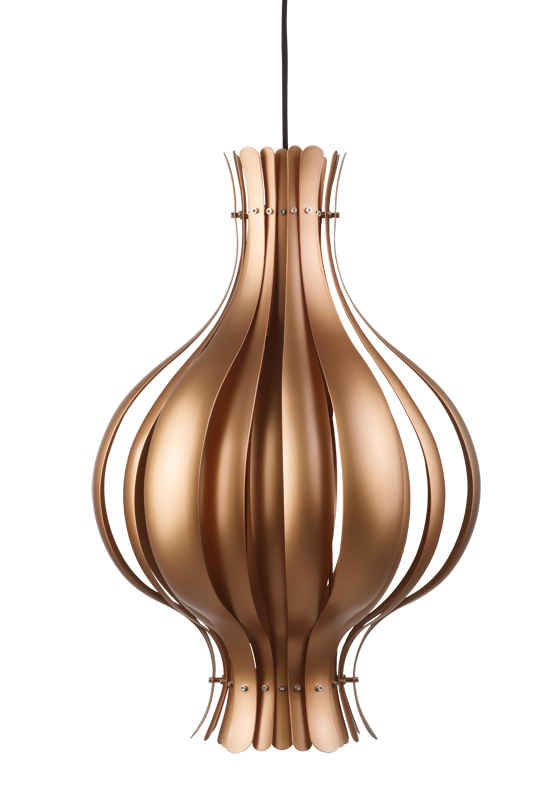
Verner Panton's 1977 'Onion' pendant light, produced for the first time in a copper colour by Verpan
×Two further greats of design history – Le Corbusier and Charlotte Perriand – were present at Euroluce in the form of their lighting designs, both produced by Cassina's lighting brand, Nemo. Corbu's idiosyncratic yet highly functional 'Lampe de Marseille' from 1954 takes a cue from the industrial lighting of its time, while Perriand's reissued 1962 'Applique à volet pivotant' wall lamp is also a pragmatically oriented piece, featuring a pivoting screen that directs the light according to the user's need.
'Applique à volet pivotant' by Charlotte Perriand, first produced in 1962 and now in production again by Cassina's lighting brand, Nemo

'Applique à volet pivotant' by Charlotte Perriand, first produced in 1962 and now in production again by Cassina's lighting brand, Nemo
×Swedish-born Greta Grossman's name might have faded with the years, but during the 1940s and 50s she was at the height of her profession, working in America on commissions from professional clients with a taste for the contemporary. Participating in the trend for reissuing classic designs in new colours, Danish design brand Gubi exhibited Grossman's iconic 'Grasshopper' floor lamp in a range of new, senstively considered colours, including blue-grey and vintage red.
Greta Grossman's 1947 'Grasshopper' floor lamp, reissued by Danish brand Gubi in a number of new colours
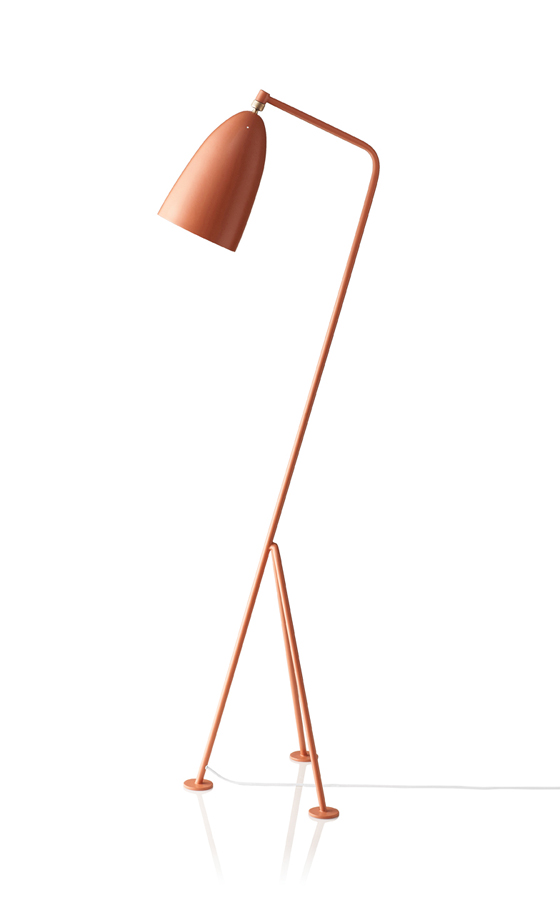
Greta Grossman's 1947 'Grasshopper' floor lamp, reissued by Danish brand Gubi in a number of new colours
×Pure
In contrast to the many lighting products that attempt to hide the source of their illumination and diffuse and reflect light through various formal elements, there's a certain truth, if you will, in lamps that almost design themselves out of the picture by making it all about the light itself and not much else. A number of such products were on display at Euroluce, but chief among them were those by Austrian manufacturer Zumtobel and by Finnish brand Artek.
'Light Fields' lighting, produced by Austrian lighting manufacturer Zumtobel
Zumtobel's LED-powered 'Light Fields' range of lighting provides efficient, brilliant illumination, which, thanks to its transparent, thermoplastic (PMMA) diffuser, eliminates glare. The lights can be surface-mounted, recessed, or installed as pendant lamps, and their highly reduced aluminium frame make them suitable for offices, among other environments.
Ville Kokkonen's 'White Lights' lighting family for Finnish brand Artek
Meanwhile, Artek, better known for its highly expressive designs when it comes to lighting (see Jørn Utzon's 'U336' pendant lamp above), has performed a rather curious, yet successful, departure from this in the form of its design director Ville Kokkonen's new 'White Lights', which privilege the light source while dramatically reducing the material presence of the products themselves. Kokkonen's no-nonsense, ultra-utilitarian table, wall/ceiling and pendant lamps provide a much needed dose of pure light in those long, dark winter months. Very Scandinavian.
....
